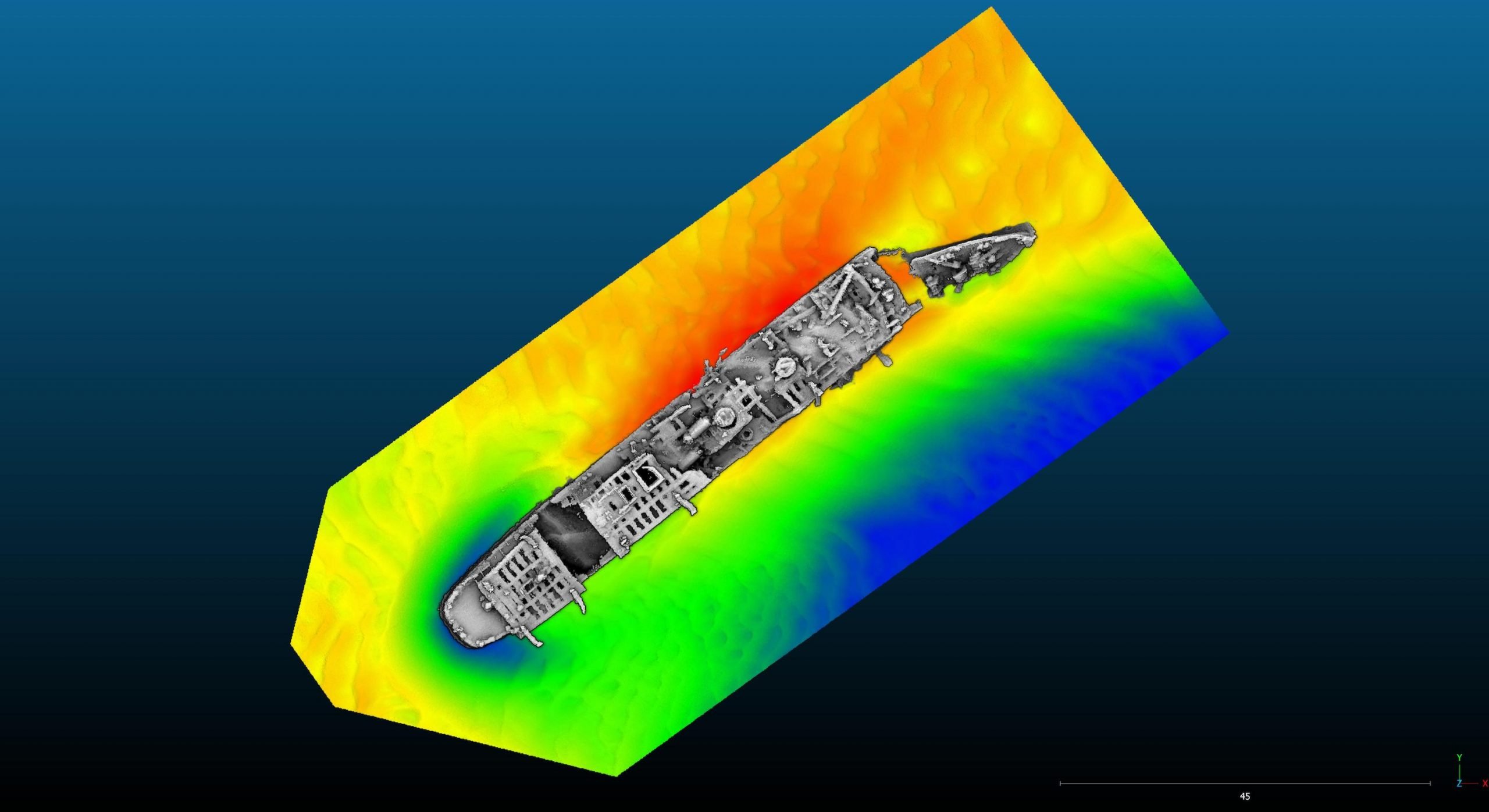
More than 80 years on from the desperate scramble of Allied troops across the Channel from Dunkirk, English and French researchers have surveyed 30 wrecks that were sunk during Operation Dynamo.
In a first collaboration between Drassm, France’s department for underwater archaeology, and Historic England, the team fixed a sonar scanner to the hull of a research vessel and trawled the waters off Dunkirk to survey the position, characteristic, and condition of each wreck.
“It’s very moving to see new details emerge from 30 shipwrecks linked to Operation Dynamo,” said Duncan Wilson, chief executive at Historic England. “The results give us a striking insight into our shared heritage that still lies beneath the waters off Dunkirk.”
New multibeam survey of the wreck of the destroyer HMS Keith. Image: courtesy A. Rochat (Drassm) and M. James (MSDS Marine/Historic England).
Sonar scanning works by sending out a fan of sound that is captured as it bounces off the seabed, thereby creating a three-dimensional image of what lies below.
To confirm the identity of the wrecks, the team worked off photographs and war records that recorded how and where vessels were sunk. Among the 30 wrecks, the location of 12 were previously unknown, and three were previously undiscovered.
Multibeam survey of the wreck of the Moussaillon. © Drassm, multibeam processed by A. Rochat (Drassm) and M. James (MSDS Marine/Historic England).
Multibeam survey of the wreck of the Denis Papin © Drassm, multibeam processed by A. Rochat (Drassm) and M. James (MSDS Marine/Historic England).
For instance, on one wreck, the davits from which lifeboats were hanged could be seen and, together with the ship’s other details and dimensions, allowed researchers to conclude that it was the Normannia, a passenger vessel that was requisitioned to carry troops. It was sunk by a Luftwaffe attack on May 30, 1940.
Though the majority of the wrecks remain in reasonably good condition, a further four wrecks could not be found, with researchers believing they have either been destroyed or covered over with sand.
Drassm’s archaeological research vessel, Andre Malraux, carried out the survey off Dunkirk to find lost ships during Operation Dynamo in 1940. Image: courtesy CUD/Ville de Dunkerque.
It’s the first stage in a multi-year project, with Drassm planning to conduct a series of dives to further explore the wrecks in 2024. Between 2015 and 2019, Drassm conducted a similar survey in Normandy to document D-Day landing beaches.
An estimated 1,000 ships participated in the 1940 rescue of 338,000 Allied troops including 700 civilian vessels.
More Trending Stories:
Revealed: The Major Mystery Consignors of New York’s Multi-Billion-Dollar Fall Auction Season
Christie’s Pulled Two Works by a Prominent Middle Eastern Artist From Sale After a Complaint